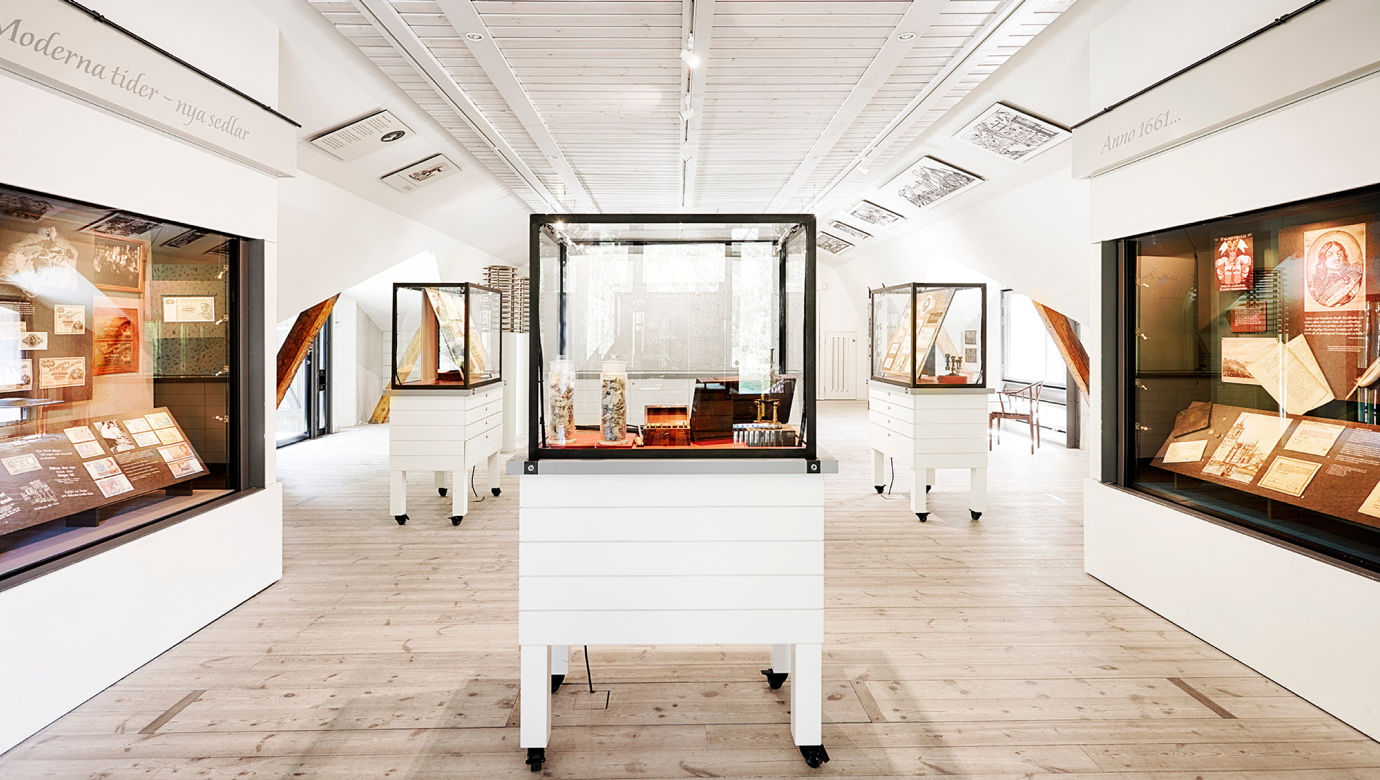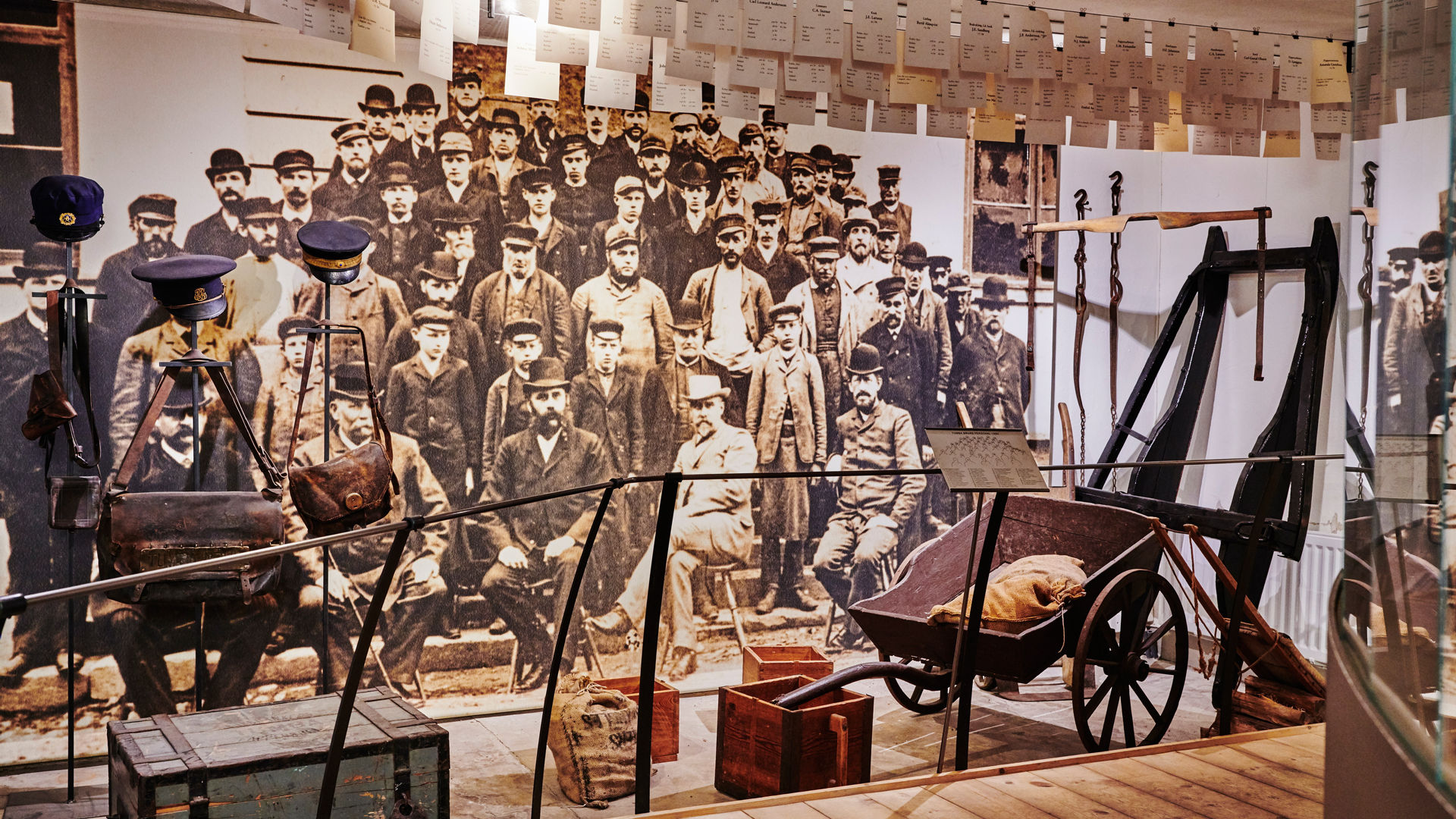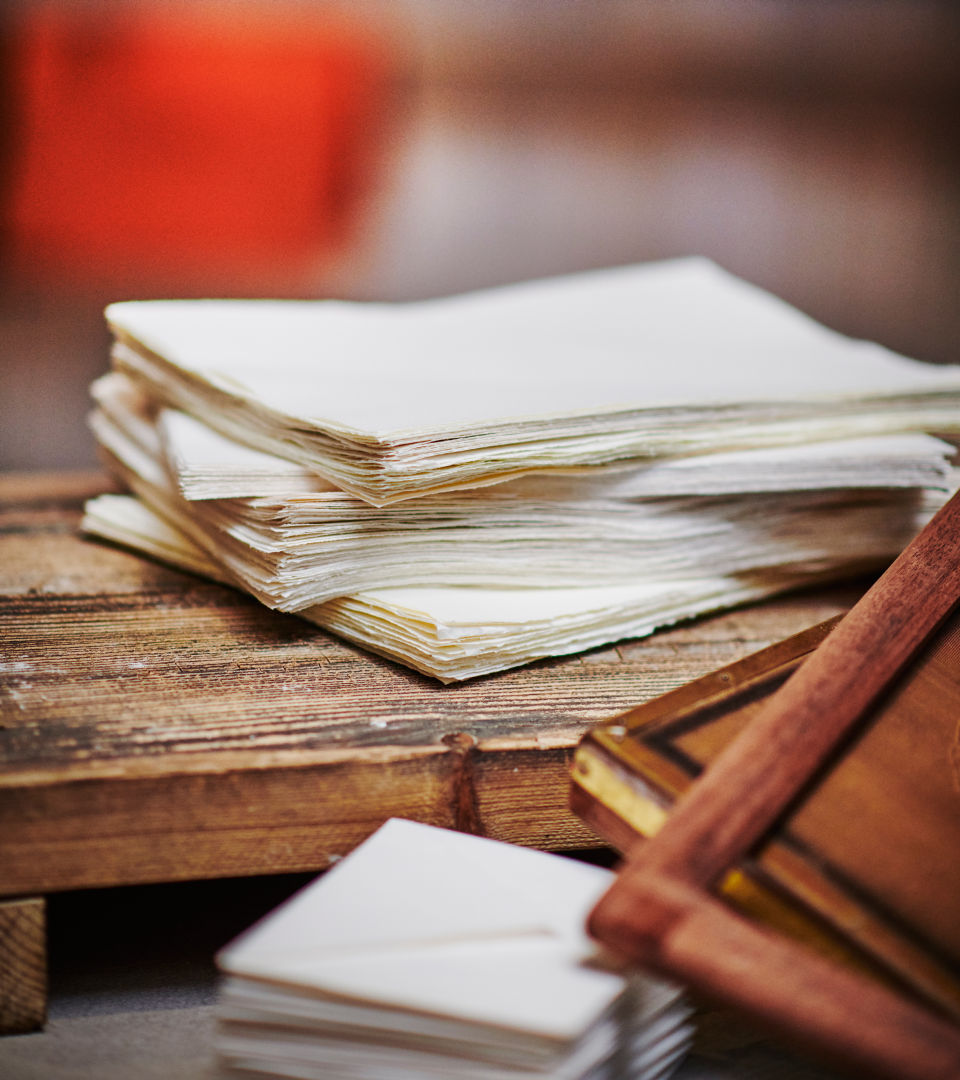
The Fire Station
Every mill has some form of fire brigade. The mills were often situated quite a distance away from towns and their fire brigades. An advantage for most mills was that they were mostly located next to some form of watercourse that drove daily operations on site. Tumba Paper Mill was no exception.
In the early days of the Tumba Mill, workers had to take turns sharing the fire watch. It must have felt like a burden to start a few hours of guard duty after twelve hours of work at the mill. In 1804, the clerk Lundroth organised a special guard force at the mill, two men strong. They divided the day into two twelve-hour shifts with a change of watch at noon and midnight.
The guards patrolled the area and marked their presence at certain designated places by blowing their horns, just as the town guards used to do. The guards also had the task of waking up the staff by ringing the bell, and if necessary going in to those who did not wake up. The need for fire guards became apparent in 1829 when the old paper mill caught fire. The fire was certainly discovered by accident and the building burned down despite early efforts to extinguish it.
The fire guards were only abolished in 1915 in favour of a more modern fire brigade. In 1924, Spruthuset was completed, the mill's “fire station”. It housed the motorised fire pump and later a fire engine.

The fire engine
The fire engine in Spruthuset is an almost exact replica of one that was purchased for the mill but was destroyed in a traffic accident in 1962 and therefore scrapped. The mill's fire engine was also built by Nymans in Norrtälje on a frame with a Scania powertrain. Like most other fire engines of the time, these were built one by one, more or less by hand, according to the client's wishes. The fire engine that once existed at Tumba Mill was a 1948 model, while the fire engine on display is a 1947 model.
The models are practically identical, the main difference being the volume of the water tank. This type of fire engine was usually built with a water tank that could hold about 800 litres of water, but this particular engine has a tank twice as large as that, as it was ordered by the Österhaninge Fire Brigade.
Large forest areas could mean that it was a long way to a suitable water supply, and the more water you could carry the better. Otherwise, it was generally expected that the water carried would only last a few minutes, intended to get the firefighting going as quickly as possible. If there was no water on hand, it was probably pointless to even try to put out the fire.

Accessibility
Spruthuset is an easily accessible environment. The exhibition is on the ground floor through a wide door. Accessible for prams, strollers and wheelchairs. The building has no toilet.



